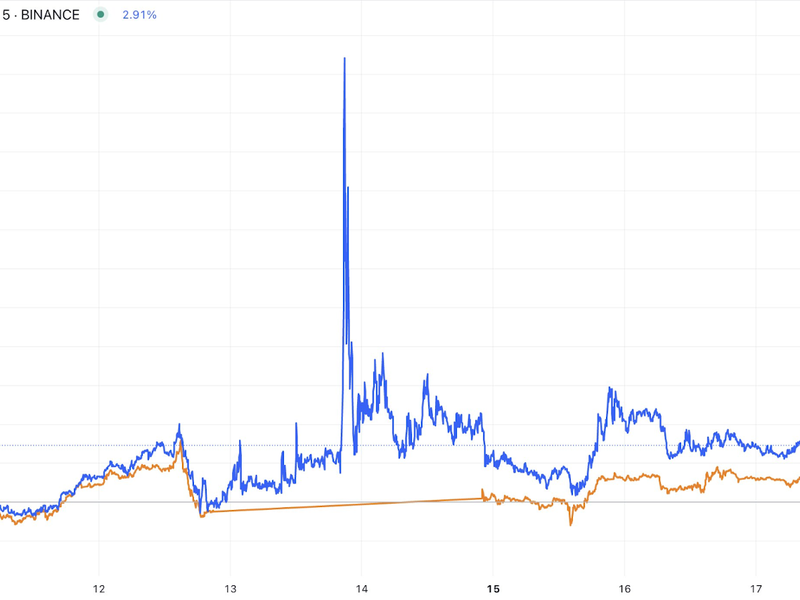Why Asset Tokenization Is Inevitable
Financial markets are undergoing a transformative shift with the advent of tokenization. This movement is not merely a speculative trend among tech enthusiasts, but a fundamental shift in how assets are managed and transacted globally.
The tokenization of real-world assets (RWAs) is not just an emerging trend; it is setting the stage for a new era of asset management.
You're reading Crypto Long & Short, our weekly newsletter featuring insights, news and analysis for the professional investor. Sign up here to get it in your inbox every Wednesday.
The distinction between crypto-native tokens and tokenized RWAs is crucial. Crypto-native tokens, such as bitcoin and ether, are purely digital and serve as both a speculative investment, store of value, and a utility within their own ecosystems. Tokenized RWAs, on the other hand, bridge the digital and traditional financial worlds, effectively bringing liquidity and fractionalization to improve the accessibility of assets that were previously “less liquid.”
The March 20 launch of BlackRock's first tokenized fund, BUIDL, a private short-term treasury fund, marked a significant milestone for tokenization. Not only did BUIDL attract almost $300 million in assets in its first month, but BlackRock, the largest asset manager, is signaling that tokenization will be “the next generation for markets.” Tokenized government treasuries are already a $1.2 billion category, with products like BENJI, issued by Franklin Templeton, BlackRock’s BUIDL, and Ondo Finance’s USDY which highlights a meteoric 10x growth since January of last year.
Currently, on-chain RWAs represent a $7.5 billion market. While this might seem marginal relative to the tens of trillions of dollars worth of assets managed traditionally, the pace of growth and the increasing range of assets being tokenized — including treasuries, commodities, private equity, real estate, private credit, and others — suggest a tipping point. A 2022 Boston Consulting Group report estimated that the market for tokenized assets could grow to $16 trillion by 2030, which would greatly enable DeFi protocols catering to these assets to develop entire new financial ecosystems across lending, liquidity pools, futures and derivatives, and other markets.
Trillions of dollars of new wealth has been created on-chain. This is a new investor demographic that expects to access and interact with financial products and services from their own wallets. These crypto-native investors have benefited from an ecosystem that operates 24/7, with lower barriers to entry than traditional financial gatekeepers, walled gardens, and business hours, and sometimes even front-running traditional markets.
A recent example that, X user @kaledora analyzed on April 13, 2024, as geopolitical tensions rose between Iran and Israel, PAXG, a version of tokenized gold, traded at a 20% premium to its closing price of April 12, with its volume peaking at end of day on Sunday, April 14. This coincided with gold’s market open at 5pm ET and illustrates that the fundamental principles of asset safety, which are central to traditional markets, also apply to digital assets.

Graph Source: @kaledora on X
The concept of "Bring Your Own Wallet" (BYOW) encapsulates the autonomy and power shift that blockchain brings to individual investors. BYOW removes the dependency on intermediaries for asset custody, allowing investors to manage and access their assets without the constraints of traditional intermediaries and delayed settlement.
As more assets come on-chain, asset managers will likely incorporate strategies that will allow them to tap into new sources of liquidity, and arbitrage between on-chain and off-chain markets. This evolution brings familiar territories on-chain, providing asset managers with the traditional framework they are accustomed to, allowing them to apply fundamental portfolio construction principles and manage investment strategies within a digital asset context that will provide distribution opportunities into crypto-native investors.
As we look forward, the tokenization of asset classes and the integration of crypto-native investment principles will likely become a standard in the modern asset management lifecycle. The shift is not just inevitable; it is clearly underway. Asset managers and allocators who embrace this change will build new generational firms that align with a new generation of investors. A generation that brings their own wallet.

 Yahoo Finance
Yahoo Finance 